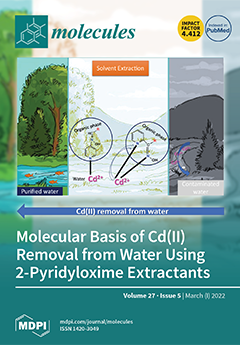Clinacanthus nutans is known to be an anticancer and antiviral agent, and
Strobilanthes crispus has proven to be an antidiuretic and antidiabetic agent. However, there is a high possibility that these plants possess multiple beneficial properties, such as antimicrobial and wound healing properties.
[...] Read more.
Clinacanthus nutans is known to be an anticancer and antiviral agent, and
Strobilanthes crispus has proven to be an antidiuretic and antidiabetic agent. However, there is a high possibility that these plants possess multiple beneficial properties, such as antimicrobial and wound healing properties. This study aims to assess the wound healing, antioxidant, and antimicrobial properties of
Clinacanthus nutans and
Strobilanthes crispus. The
Clinacanthus nutans and
Strobilanthes crispus leaves were dried, ground, and extracted with ethanol, acetone, and chloroform through cold maceration. In a modified scratch assay with co-incubation of skin fibroblast and Methicillin-resistant
Staphylococcus aureus,
Clinacanthus nutans and
Strobilanthes crispus extracts were assessed for their wound healing potential, and the antimicrobial activities of
Clinacanthus nutans and
Strobilanthes crispus extracts were performed on a panel of Gram-positive and Gram-negative bacteria on Mueller–Hinton agar based on a disc diffusion assay. To assess for antioxidant potential, 2,2-diphenyl-1-picrylhydrazyl (DPPH), total phenolic and total flavonoid assays were conducted. In the modified scratch assay,
Clinacanthus nutans extracts aided in the wound healing activity while in the presence of MRSA, and
Strobilanthes crispus extracts were superior in antimicrobial and wound healing activities. In addition,
Strobilanthes crispus extracts were superior to
Clinacanthus nutans extracts against
Pseudomonas aeruginosa on Mueller–Hinton agar. Acetone-extracted
Clinacanthus nutans contained the highest level of antioxidant in comparison with other
Clinacanthus nutans extracts.
Full article






